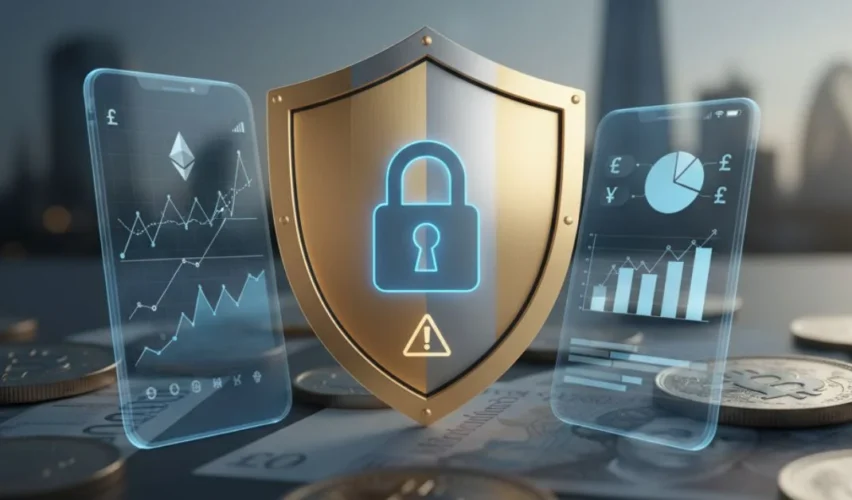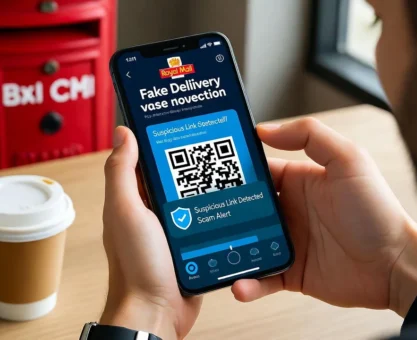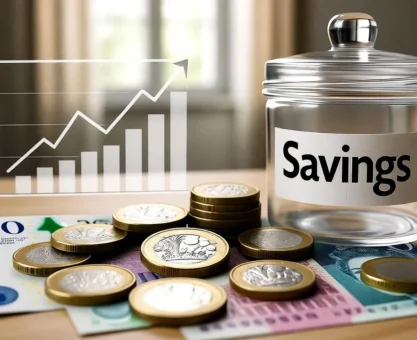UK Savings at Risk: 7 Ways to Protect Yourself from Investment and Crypto Scams
Last year, I almost sent £500 to a "too-good" crypto platform after seeing a slick ad with a well-known TV face. A brief look at the FCA register saved me. You're not the only one who has had a similar wobble. This guide on UK Savings at Risk: Why Investment & Crypto Scams Are Soaring + 7 Protection Tips tells you what's going on, why it matters, and how to keep your money safe.
What Is UK Savings at Risk: Why Investment and Crypto Scams Are on the Rise + 7 Ways to Stay Safe
In simple terms, we're talking about how investment fraud and crypto scams are putting people's savings in the UK at greater risk and how to stay safe with a seven-step plan.
Think of scammers as fishermen throwing out a lot of lines. Some hooks are easy to spot, but others look like high-quality lures, like fake "UK-regulated" badges, cloned bank pages, and even deepfake celebrity videos. The point of this is to help you find the hooks and protect your money.
Important words you'll see:
- Companies that are allowed to do business and those that aren't (FCA-regulated or not)
- Fake domains and cloned websites
- APP fraud (authorized push payments)
- Schemes like pump-and-dump and Ponzi
- Scams in the recovery room (fraudsters who go after victims twice)
Why are UK Savings at Risk? 7 Important Tips for Protecting Yourself from Investment and Crypto Scams
Because real people, who are often careful and smart with their money, are losing real money. Criminals have improved their advertising. They use:
- Ads on social media that look like they were made by professionals.
- Fake endorsements from people you trust.
- "Account managers" who sound like they know what they're talking about and are British.
- Dashboards that show fake profits to get people to make bigger deposits.
When pressure and promise meet, common sense can get shaky. A simple system that you follow every time money leaves your account is the best way to protect yourself.
How to Use UK Savings at Risk: Why Investment and Crypto Scams Are Rising + 7 Ways to Protect Yourself (Step by Step)
Before you put any money into something, follow these seven steps. It's like a list of things to do before you fly with your money.
- 1) Check the FCA Register to make sure the company is real.
Don't just look at the logos on a website; make sure you check the FCA Register for the company's full legal name, reference number, and contact information. Then, look at the website and emails you have and see how they match up. A mismatch is a big sign that something is wrong.
Bonus: Look for the firm and its URLs on the FCA Warning List. - 2) Take your time and say no to urgency.
Real providers won't say that an offer "expires in 30 minutes." Give yourself a break—like, sleep on it for 24 hours. - 3) Check that the product and the promise are real.
It's a fairy tale that you can get high returns with "no risk." Get the Key Information Document or prospectus. Step back if the answers start to get fuzzy. If someone tells you they've made a car that flies, don't just ask for the brochure; ask for the manual. - 4) Look at the protections and the flow of money.
Where will your money be? Is it separated? Could Section 75 apply if a card is used? If someone asks for a bank transfer, use Confirmation of Payee to verify that the name of the beneficiary is correct. Don't ever send money to personal accounts "just for the first deposit." - 5) Keep your devices and identity safe.
Turn on two-factor authentication for your email, banking, and investment apps. Make sure your phone and laptop are up to date. Think about getting a password manager. If criminals can't get in, they can't "approve" payments without your knowledge. - 6) Before you grow, test the platform.
If you still want to take a chance, start small. Start by taking out a small amount. If support stops or charges "release fees," you've learned cheaply. - 7) Ask someone else to look at it.
Consult with a knowledgeable friend, your bank, or a regulated advisor. The most important thing you can do is take a two-minute gut check.
Examples and situations that happen in real life
- The cloned platform: A saver finds a crypto "exchange" that has a .co.uk domain and the FCA logo. The "account manager" picks up the phone right away. But the FCA Register doesn't list the company's phone number. The saver is told to pay an "HMRC clearance fee" when they try to take money out. That's the sign.
- The celebrity endorsement that never happened: A viral video shows a well-known host talking about how excellent an automated trading app is. It's a fake. The app shows "profits" right away on the first day, which makes the user want to put in more money. Withdrawals stop when the balance gets too high.
- The recovery-room trap: After losing money to a fake broker, a victim gets a call from a "law firm" that says they can get it back for a fee up front. It's the same criminals again.
Why UK Savings Are at Risk: Investment and Crypto Scams Are on the Rise + 7 Ways to Protect Yourself
Using this checklist gives you real benefits:
- A process that you can use over and over again without getting stressed out about your investments.
- Fewer mistakes: You'll quickly get rid of 95% of bad offers.
- Better results: You'll choose providers that are regulated and open.
- Less time wasted: Finding red flags early means fewer long email chains and "support tickets."
- How to stop fraud for UK savers
- Better ways to invest safely
- Awareness of FCA's authorization
- Confidence in reporting Action Fraud
- How to stay safe from app scams and fake websites
Things to Keep in Mind / Limitations
- Not every risk is a scam. Even real investments can lose value. Time frame and diversification are important.
- Be careful with crypto. It's normal for things to change; rules are changing too. Don't consider it to be savings; consider it to be speculation.
- There are misconceptions surrounding refunds that need to be addressed. Bank transfers are not the same as card chargebacks. Once it's gone, it's difficult to get it back.
- Shiny dashboards lack meaningful value. You can code screens to show any number. The only proof is the money in your bank.
FAQs About UK Savings at Risk: Why Investment and Crypto Scams Are on the Rise + 7 Ways to Stay Safe
Is every investment that isn't regulated a scam?
No, but using a provider that isn't regulated raises your risk. You might not be able to get help from the Financial Ombudsman Service or FSCS if something goes wrong.
How can I find out if a business is real?
Look up the exact name on the FCA Register. Check that the phone number, email address, and website match the listing. If they don't, leave.
What if I already sent money?
Call your bank right away. Tell Action Fraud. Ask about chargeback or Section 75 if a card was used. Keep all the proof.
Are celebrity-backed crypto schemes ever real?
Very rare. If you encounter something that appears to be fake, please verify it with primary, regulated sources before accepting it as true. Don't just believe what you see in videos; deepfakes are everywhere.
Is it safe for me to put money into crypto?
Only with money you can afford to lose, through UK-compliant platforms that are safe and clearly understand taxes and volatility.
The End
Scams love things that are fast and shiny. Your edge is the opposite: slow checks, plain documents, verified companies, and small first steps. There are no exceptions to the 7 Protection Tips. Once your savings leave your account, getting them back can be challenging, and you might not win.
Links to trusted outside sources:
- FCA Register and Warning List: https://register.fca.org.uk/
- Action Fraud (to report): https://www.actionfraud.police.uk/
- The Financial Ombudsman Service can be found at https://www.financial-ombudsman.org.uk/.
















